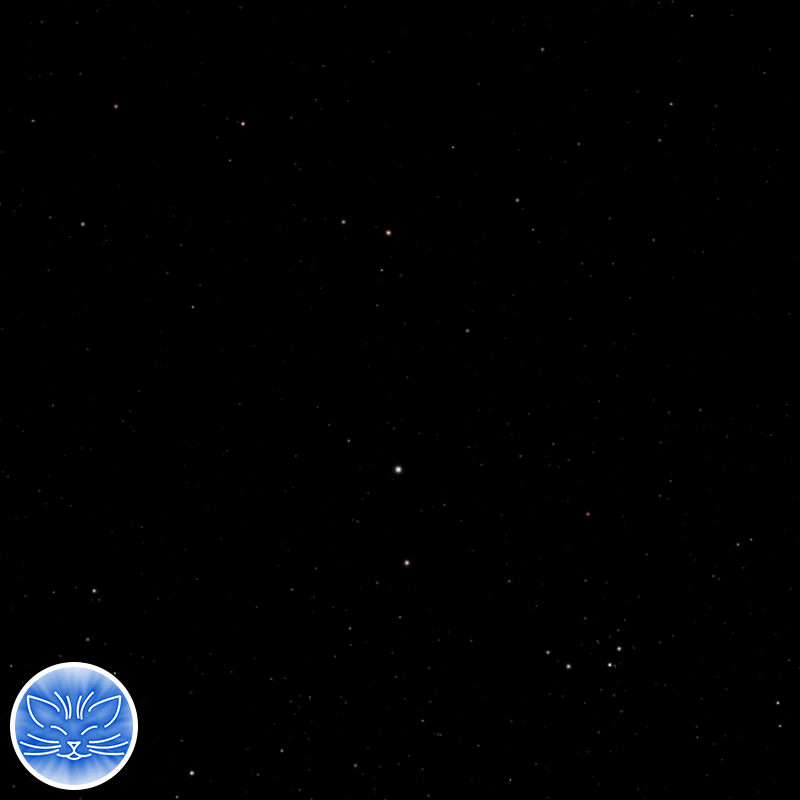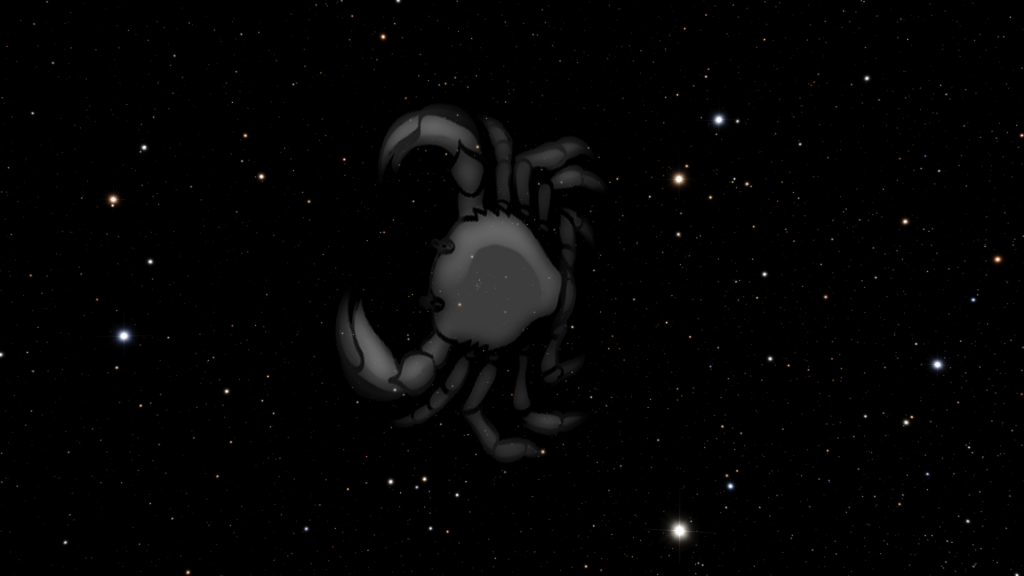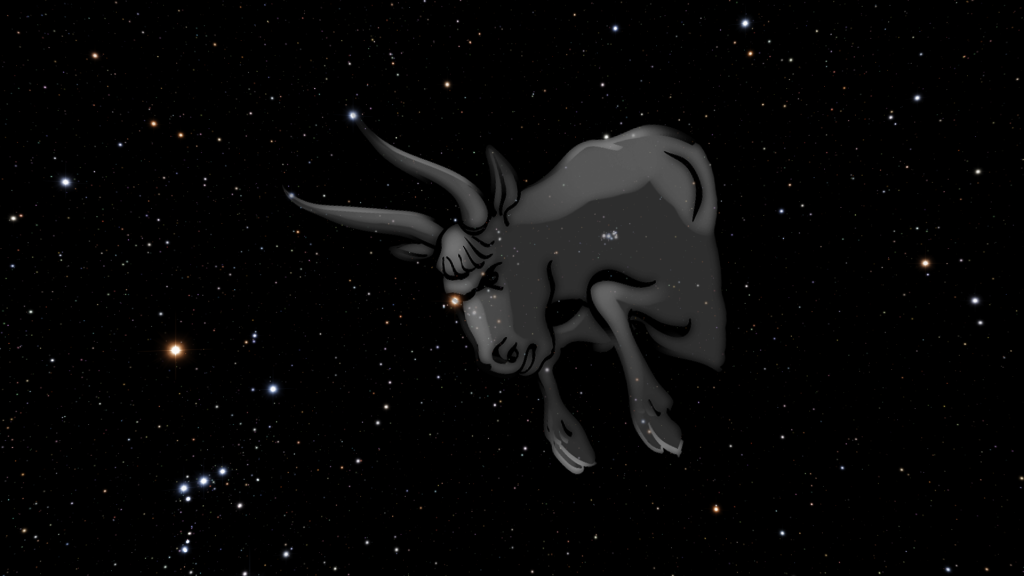Pyxis (mariner’s compass) is the constellation of the southern hemisphere of the sky. In northern hemisphere it can be seen only in the southern regions. The best period for observations is from February to March. The easiest way for residents of the southern hemisphere to find it is if, at the moment when the constellation is high above the horizon, they find the bright yellow-white star Canopus in the sky – the lower part of Argo Navis (ship), of which Pyxis (compass) is a part. Canopus is the second in brightness only to Sirius. But, unfortunately, it is impossible to observe this star in the northern regions of the northern hemisphere. In the northern hemisphere, Pyxis can be found well to the left of Canis Major with the brightest star Sirius. On ancient maps of constellations, Pyxis rather resembles a tiller (part of the steering control for turning the steering wheel).
Pyxis is one of the constellations through which the plane of our Galaxy passes. However, the band of the Milky Way in this constellation is not very bright due to the presence of dust clouds in this direction, absorbing the light of stars.
How can you see Pyxis constellation in the sky? In large cities, because of the glare and dust, it is not so well visible, so animations and an image are prepared for you outside the city, in the mountains and if you look at it in space, from orbit.



There are no bright stars in Pyxis constellation. 43 stars can be seen with the naked eye. The brightest star in the constellation is Alpha Pyxidis (α Pyx) with apparent magnitude of 3.67. Its mass exceeds the mass of the Sun by more than 10 times, and its radius is more than 6 times. This giant star will end its evolution as a supernova. In China, this star has the name T狗 (Tiān GǒU), which means “heavenly dog”. The second star of the constellation is β Pyx with apparent magnitude of 3.97. The third is γ Pyx with apparent magnitude of 4.02.

Other interesting objects of Pyxis constellation
In addition to the stars, other objects can be observed in this constellation, such as galaxies and scattered star clusters. The apparent magnitude of the clusters is 8–9, which does not allow them to be seen without special equipment. They are included in the “New General Catalog” (NGC), as they were discovered much later than the formation of the Messier catalog. There is a very massive galaxy NGC 2613 in Pyxis constellation, similar to our Milky Way.

Also in Pyxis constellation, at a distance of 30 million light-years from us, is the dwarf galaxy Hen 2-10. It is interesting because it refers to starburst galaxies. In 2011 it became known that this galaxy contains a supermassive black hole with a mass one million times that of the Sun.

Mythology of Pyxis Constellation
Pyxis constellation is among the new ones, a three-letter abbreviation of Pyx. The Latin word ‘pyxis’ means ‘marine compass’. It is not the most noticeable and small – the 65th largest of all 88 constellations.
Originally there was one large constellation – the Argo Ship (Argo Navis or simply Argo), abbreviated Arg. This is the only constellation mentioned by Ptolemy in the Almagest, consisting of 48 constellations, which is currently no longer in use. Given that the ancient Greeks did not have compasses, some celestial atlases had a mast in its place. The ship moves through the sky from east to west backwards, which is nothing more than a new word in navigation. French astronomer Nicolas-Louis de Lacaille, who conducted research in Africa on behalf of the Paris Academy of Sciences, in 1756, because of its large size, proposed dividing this constellation into several independent ones: Carina (the keel), Puppis (the stern), and Vela (the sails) and added Pyxis (the compass) to them. In 1763, a catalog of the starry sky with new constellations was published, which was published shortly after Lacaille’s death.
On this ship, according to Greek legend, Jason and the Argonauts went in search of the golden fleece. Thanks to the help of the goddess Hera and the love of Princess Medea, who soon became his wife, he managed to make the hard way to Colchis and take possession of the rune. And on his return from the trip, overthrow his uncle Pelias and get the throne.
Have you seen this constellation? In the northern or southern hemisphere? Have its objects been observed through binoculars or a telescope? What is your favorite constellation? Share your impressions in the comments.






Re Pyxis – I live in the southern Africa and am surprised I have not heard of NGC2613 before. 3 months ago it would have been directly overhead in the evening. Nor have I ever taken much notice of Pyxis. I see it forms an equilateral triangle with Canopus and Sirius. Will take a look this evening even though it will be low in SW sky. Main stars are mag 4 which is my overhead urban limiting naked-eye magnitude, but should see it through binoculars. Was recently given some 25 x 100 binoculars with 2 degree FOV which makes it a bit more difficult navigating, but I will try. Thanks for the email updates.